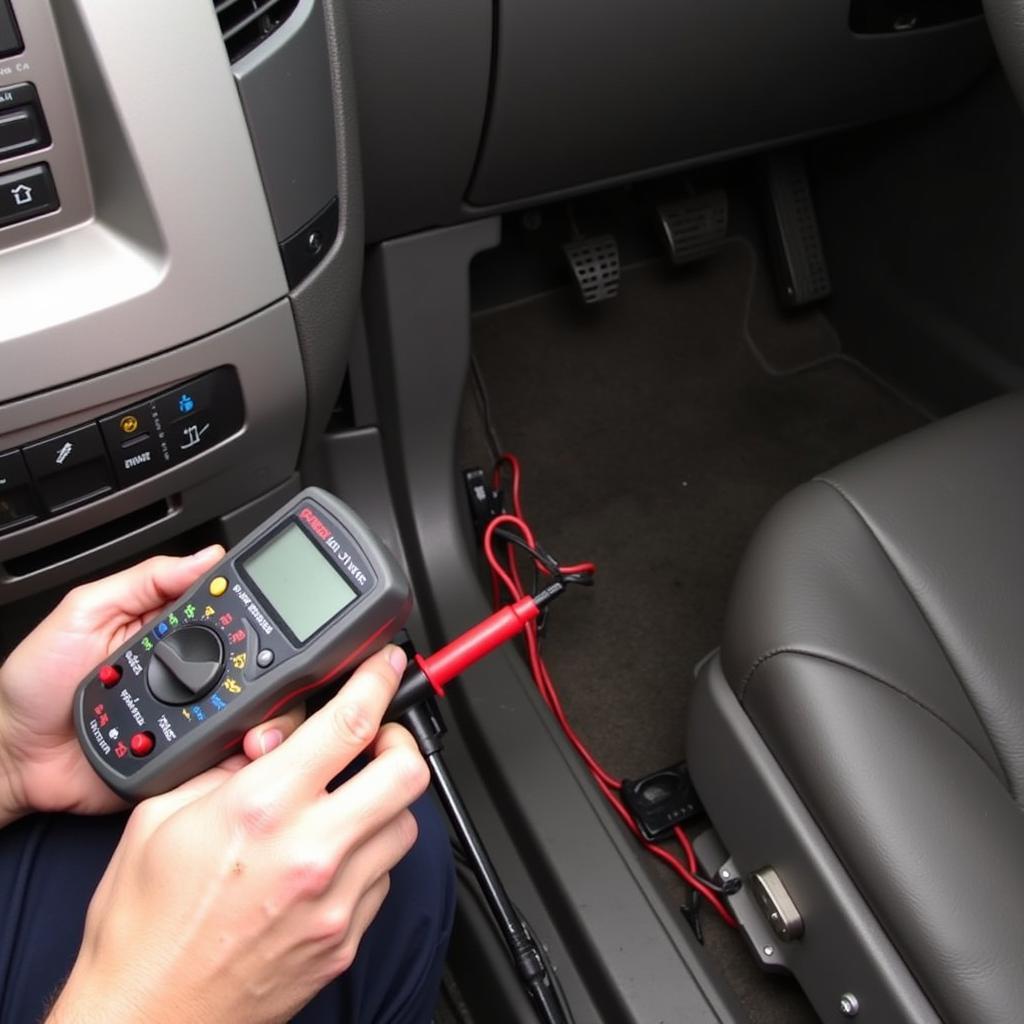The brake lamp warning light on your 2005 Honda Pilot is a crucial safety feature, illuminating on the dashboard to alert you of potential braking system issues. Ignoring this warning could lead to reduced braking performance and increase the risk of accidents. This comprehensive guide will delve into the common causes of a 2005 Honda Pilot brake lamp warning light and provide you with the knowledge to diagnose and address the issue effectively.
Understanding Your Honda Pilot’s Brake Light System
Before diving into troubleshooting, it’s beneficial to understand the components of your Honda Pilot’s brake light system:
- Brake Pedal Switch: This switch, located above the brake pedal, activates the brake lights when you depress the pedal.
- Brake Light Bulbs: Your Honda Pilot uses individual bulbs for the brake lights and taillights.
- Wiring and Connectors: Wires and connectors transmit the electrical signal from the brake pedal switch to the bulbs.
- Fuses: A blown fuse in the brake light circuit can disrupt the flow of electricity.
Common Causes of a 2005 Honda Pilot Brake Lamp Warning Light
Here are the most prevalent reasons why your 2005 Honda Pilot’s brake lamp warning light might be on:
1. Burnt Out Brake Light Bulbs
The most common culprit is often the simplest – a burnt-out brake light bulb. Over time, these bulbs can fail, causing the warning light to illuminate.
Solution:
- Identify the burnt-out bulb by visually inspecting all brake lights (left, right, and center).
- Replace the faulty bulb with a new one of the correct type and wattage.
2. Faulty Brake Light Switch
A malfunctioning brake light switch is another frequent reason for the warning light. If the switch fails to engage properly when you press the brake pedal, the lights won’t activate.
Solution:
Testing the switch often requires a multimeter. If you’re uncomfortable with electrical components, it’s best to consult a qualified mechanic.
 Testing 2005 Honda Pilot Brake Light Switch
Testing 2005 Honda Pilot Brake Light Switch
3. Blown Fuse
A blown fuse in the brake light circuit will interrupt the power supply, leading to inoperable brake lights and triggering the warning light.
Solution:
Consult your owner’s manual to locate the correct fuse box and identify the fuse associated with the brake lights. If the fuse is blown, replace it with a new one of the same amperage rating.
4. Wiring Problems
Damaged, corroded, or loose wiring within the brake light circuit can also disrupt the signal flow, causing the warning light.
Solution:
Inspect the wiring harness for any visible signs of damage, loose connections, or corrosion. Repairing or replacing damaged wiring often requires the expertise of a mechanic.
5. Faulty Trailer Wiring Harness
If you frequently tow a trailer, a faulty or improperly installed trailer wiring harness can interfere with your Honda Pilot’s brake light system.
Solution:
Inspect the trailer wiring harness for any damage or loose connections. If you suspect issues, disconnect the harness and check if the brake lights function correctly. If the problem persists, consult a qualified mechanic or trailer wiring specialist.
Expert Insights
[Name Surname], Senior Automotive Electrician at [Reputable Automotive Shop], emphasizes the importance of addressing brake light issues promptly. “[Quote about the safety risks of ignoring brake light problems and the importance of professional diagnosis for complex electrical issues.]”
Conclusion
The brake lamp warning light on your 2005 Honda Pilot is a crucial safety indicator. By understanding the common causes and solutions outlined in this guide, you can effectively diagnose and address the problem. Remember, if you’re unsure about any aspect of diagnosing or repairing your vehicle’s brake system, it’s always safest to consult a qualified mechanic to ensure your safety and the proper functioning of your Honda Pilot.
